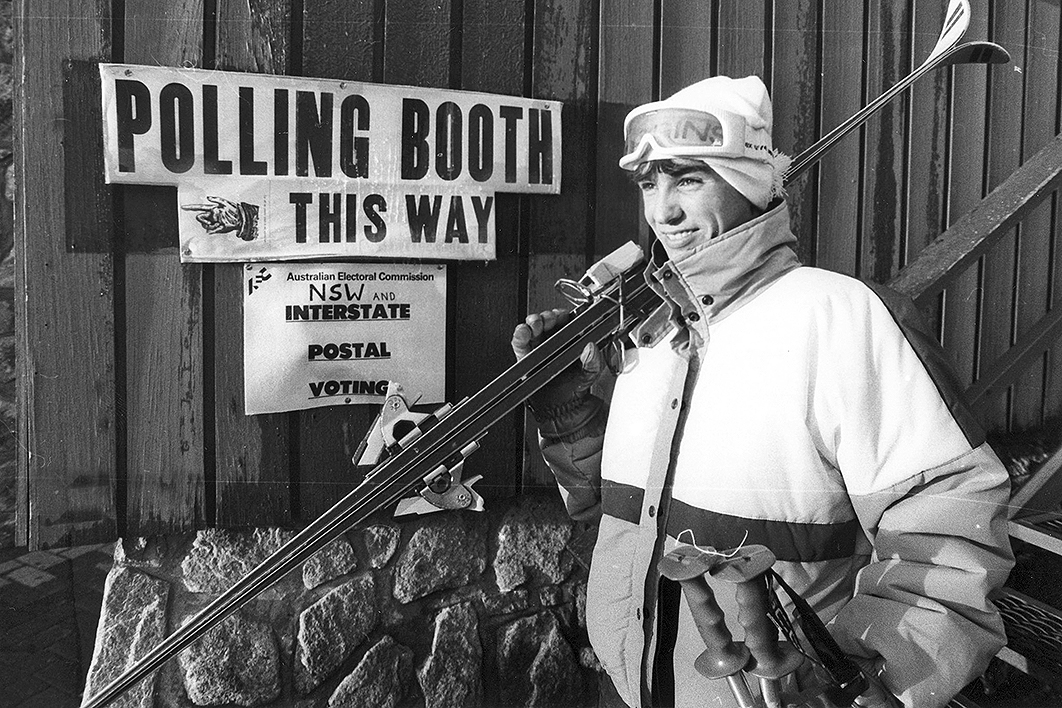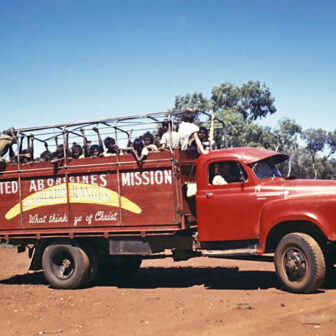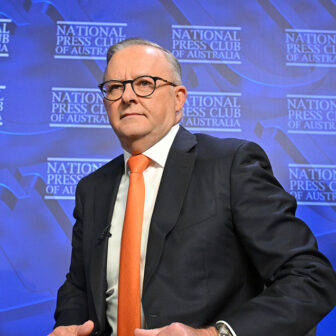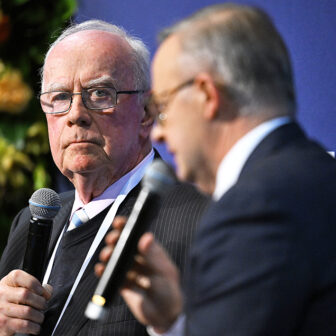I began questioning the wisdom of compulsory voting for referendums seven years ago. By midway through the Voice campaign, I was convinced it is folly.
We will never be able to make even modest changes to what is a modest, institutionally focused Constitution as long as “Don’t know, Vote no” is a simple and effective go-to for opponents of change. That flaw in the rules of our democracy is, however, far from explaining the hefty loss of the Voice proposal.
Yes garnered less than 40 per cent of the vote, despite having recorded more than 60 per cent in opinion polls before the No cause assembled its grab-bag of arguments. It did so despite enjoying the lion’s share of donations and support from high-profile corporations and cultural influencers alike. (This was one reason there were no serious moves from the left to trial expenditure limits in the referendum, even while rightly clamouring for such limits for elections.)
There will be much hand-wringing about the result of this referendum. Friends and family, particularly from overseas, contacted me before referendum night was complete. They bemoaned having once been Queenslanders, or said they wanted to “hide” as Australians.
Unsurprisingly, given the long, deliberative process that gave us the Uluru Statement from the Heart, Aboriginal and Torres Strait people, taken collectively and by large margins, supported the Voice. It is for them to react to this setback: whether in anger or sorrow, and whether with a renewed push for treaties, re-engagement through existing organisations and parties, or disengagement.
For the rest of us, it is time to reflect on what the results might mean. We could, like one senior political scientist, tell ourselves that “Australian politics is at a dead end” because “Australia is a morally backward society.” (This was penned in a progressive blog for public servants and analysts.) Or we could pause to reflect on what the referendum process and voting patterns have to tell us.
On voting patterns, we must await the full results. Even then, at best we will find correlations between polling booths and local demography rather than clear causal explanations. The data will also be clouded by pre-poll voting at giant booths covering numerous localities. Early votes appear to have skewed even more than the rest, partly because younger voters are less likely to vote early and partly, perhaps, because No voters were on the whole more firm-minded than Yes.
Older voters skewed heavily No. The other utterly clear pattern is that the further from the urban, the less likely any region was to vote Yes. Of just over one-in-five seats to register a Yes majority at the time of writing, twelve were in Melbourne, eight in Sydney, three in Brisbane, three in Canberra, two in Perth and two in Hobart. The seats encompassing Newcastle and Wollongong were the only non-capital electorates to support the Voice.
Indeed, Yes electorates were almost all inner-city. The Greens’ seats of Melbourne and Sydney, the prime minister’s electorate around Marrickville, and the Labor stronghold in inner Canberra recorded between 70 and 77 per cent support. Teal seats like Kooyong, North Sydney and Warringah also voted around 60 per cent in favour. My own, diverse Brisbane electorate of Moreton broke nearly 50–50. Its strongest Yes booth was in a leafy riverside area; its strongest No in the well-to-do, but more suburban, Chinese enclave of Sunnybank.
Truly suburban electorates invariably voted No. Beyond that ring, No reached over 75 per cent in all the vast and remote electorates of South Australia, Western Australia and Queensland, topping nearly 85 per cent in Maranoa in western Queensland. Even in Lingiari, the non-Darwin based Northern Territory seat, No prevailed.
While the socioeconomic and ethnic aspects of all this have yet to be teased out, the clearest lesson is that — Indigenous communities excepted — the more distant, culturally and geographically, from the heart of the capitals, the heavier the proposal was rejected.
On the process, the potential for misinformation to swirl at gale-force speed was again shown to be a feature of the internet age. No one knows how to mitigate that. The worst elements of the No movement exploited this. If you muddy the waters, it is easier for confused electors to follow the conservative instinct of “don’t risk it.”
That said, neither the government nor the Yes movement pushed to trial “truth in political advertising” laws at the referendum, even though we are on the cusp of such a law for national elections.
Pragmatically, this was understandable. Such rules only restrain good-faith participants and campaigners with an institutional reputation, not ad hoc movements. They may have led to stories about campaign tactics detracting attention from the underlying referendum question itself. And even the Yes camp wanted to run claims that were less factually true than emotionally reassuring (for example, that such a Voice was “not about race”).
A hallmark of the Australian system, as ANU law professor Geoffrey Sawer observed sixty years ago, is that “constitutionally speaking, we are a frozen continent.” It’s a hot place, but the Constitution is like pack ice. Any change comes glacially, through High Court tweaks and the evolution of less formal intergovernmental arrangements.
This appeals to conservatives, who regard a written constitution as a bedrock document. But geology doesn’t govern sociology. Times change, and the underlying rules of governance need to evolve too. Opposition to change for its own sake is as bad as change for its own sake. Thoughtful conservatives know our 1901 Constitution is rickety, not least in its federal–state imbalances.
The other hallmark of our constitutional system is that it is a “small brown bird,” as High Court Justice Pat Keane put it. It is not a soaring eagle like the United States’s constitution or its rhetorically flourishing Declaration of Independence. Nor is it dense with rights and values, unlike the modern constitutions of, say, South Africa, Canada or Papua New Guinea.
In that company, the Australian Constitution is a thin document. It is focused not on limiting power or emancipating people but on dividing power between branches and levels of government. This very blandness is a strength: very few people project their own fantasies onto it.
But this also means constitutional literacy in Australia is low. Such ignorance is not irrational: in truth, it reflects the constitution’s authors intention to leave the interesting questions of regulation and social norms to the political process.
Where did the Voice fit into this? As the two-pronged official Yes case put it, it fitted at two levels. One dealt with the “why?” of constitutional change? It was about symbolic recognition: actually mentioning Aboriginal and Torres Stair peoples as the First Nations, in a Constitution that effaced them.
The other, more substantive, question was “why a Voice?” Here, the argument was an institutional one about improving politics. The proposal was consciously tailored to appeal to constitutional conservatives: not a bill of Indigenous rights, but an institution to advise the Commonwealth government and parliament.
The first, symbolic element, initially appealed to the majority of Australians. The second, institutional question, elicited something between indifference and disquiet. The indifference was formally rational: why research the potential role or design of a Voice that would merely advise on policy on behalf of a relatively small minority?
The disquiet was another Achilles heel for Yes. “Politics is broke, this will help” is a good argument on its face. But coming from longstanding politicians it risked being an own goal or, worse, inviting the resentful reaction “well, why reform just for Indigenous peoples?” To deal with that reaction then required deep history and socioeconomic lessons.
In the end, it remains a folly to try to force people to have a considered view on this kind of institutional law reform, narrow in scope and topic. The Australian Constitution itself was a product of voluntary voting, and referendums for the first twenty-five years were voluntary.
Years ago, at an academic briefing for MPs on referendums, I put this view. My academic colleagues, bless them, disagreed. All we need is more education, they insisted. Well, educators would say that; but I’m not sure the overwhelmed school curriculum is really to blame.
As for MPs, Mark Dreyfus (now attorney-general) told me gently that voluntary voting at referendums was an interesting idea, worth discussing. But he reminded me that his Labor colleagues were wedded to a belief that compulsion was inherently social democratic.
It is true, as political scientist Lisa Hill has demonstrated, compulsory voting at elections is the best way to avoid politics slipping into exclusivity. If you don’t vote, your interests don’t count for most politicians. A habit of voting at elections is developed, and in the big questions that decide elections such as ideology, “do I trust Albo or ScoMo with the levers” or “are we better or worse off as a society than three years ago,” everyone’s view is equal.
Referendums, unless they engage a general social concern (like marriage equality) or an existential question (like Brexit) are not so engaging. Worse, unlike a regular election, once we say No (or Yes) to a constitutional question, that decision is all but locked-in for a generation or more.
In the end, what have we learnt? Australia is not “morally backward” even if, as a whole, it is no closer to facing up to history. Democracy is hard, and reform even harder, when reliable information is lost in a swirl of misinformation or when reform is perceived as elite-driven or remote from the concerns of the majority.
Above all, it is important not just to pose the right questions, but also not to force the rationally uninterested to wield a power of veto over reform. •
Postscript
After results were finalised, I looked for examples of extreme differences between polling booths. In Queensland, the highest Yes vote, not surprisingly, was in the Far North, where Indigenous communities are often small but tight.
More than 87 per cent of those who voted via the “Other Mobile Teams 1 and 2” wanted the Voice. Those teams serviced 102 voters at the Lotus Glen Correctional Centre, near Mareeba. Its “catchment” runs from Mt Isa in the far west through to the Torres Strait Islands. (Anyone on remand or convicted but serving a sentence of fewer than three years is still entitled to vote.)
The nearest booth of comparable size was Mutchilba, about twenty-five kilometres inland. There, the free men and women voted 90 per cent No. A similar distance away, but towards the coast, of more than 85 per cent of the 8000-plus votes cast in Mareeba were also No.
The No case labelled the referendum inherently divisive. But a more telling or poignant illustration of the existing divide is hard to imagine.




